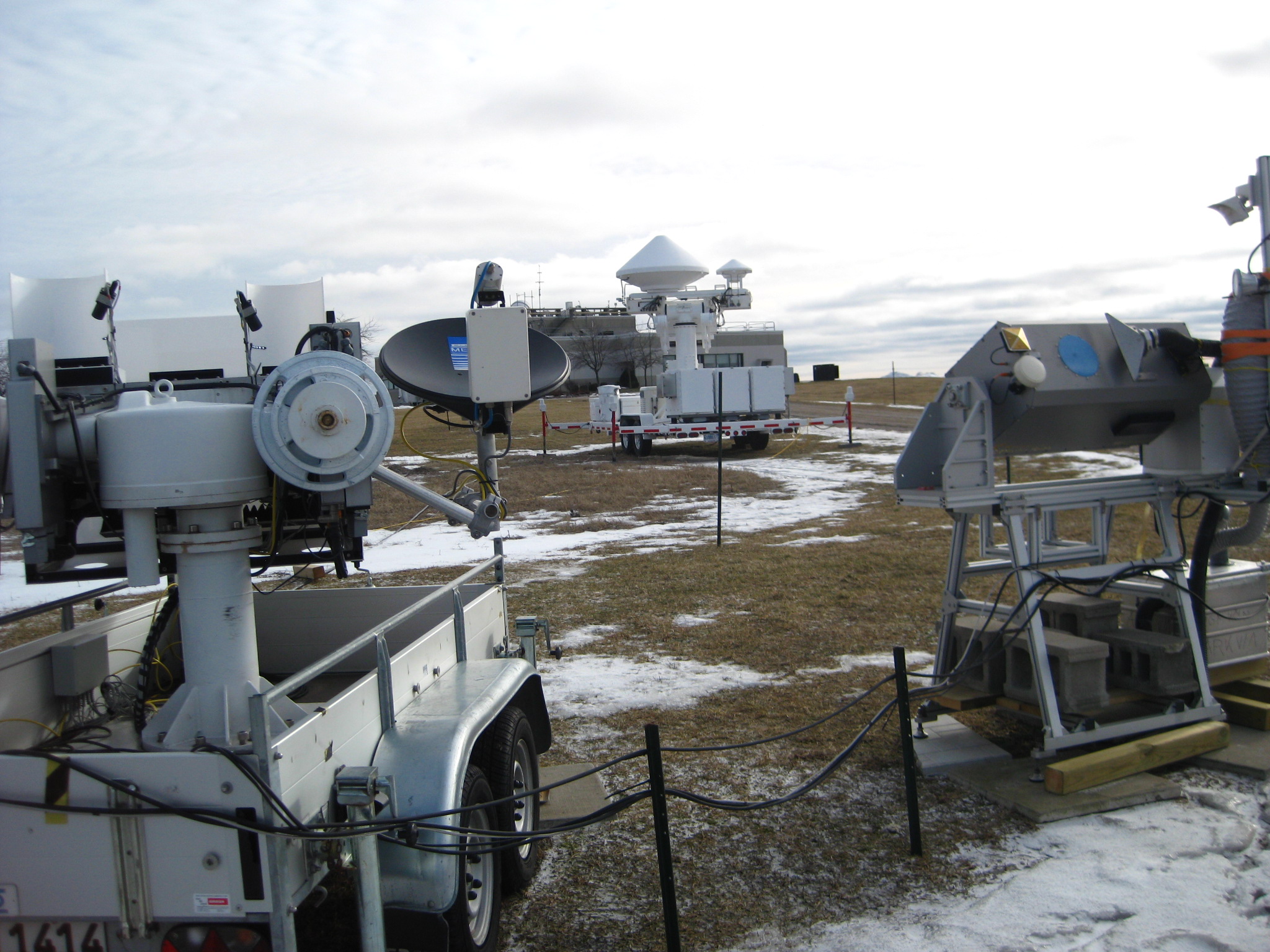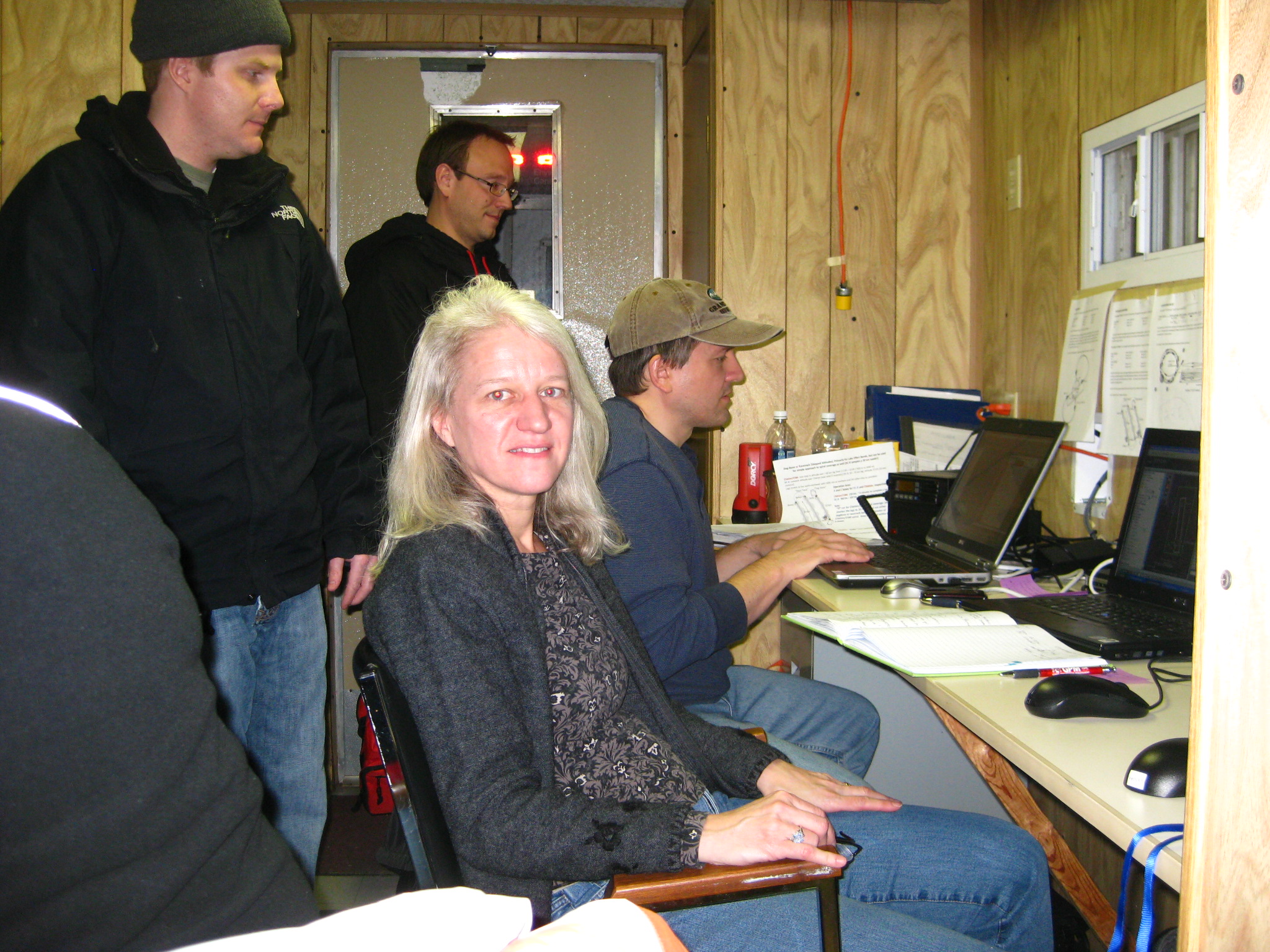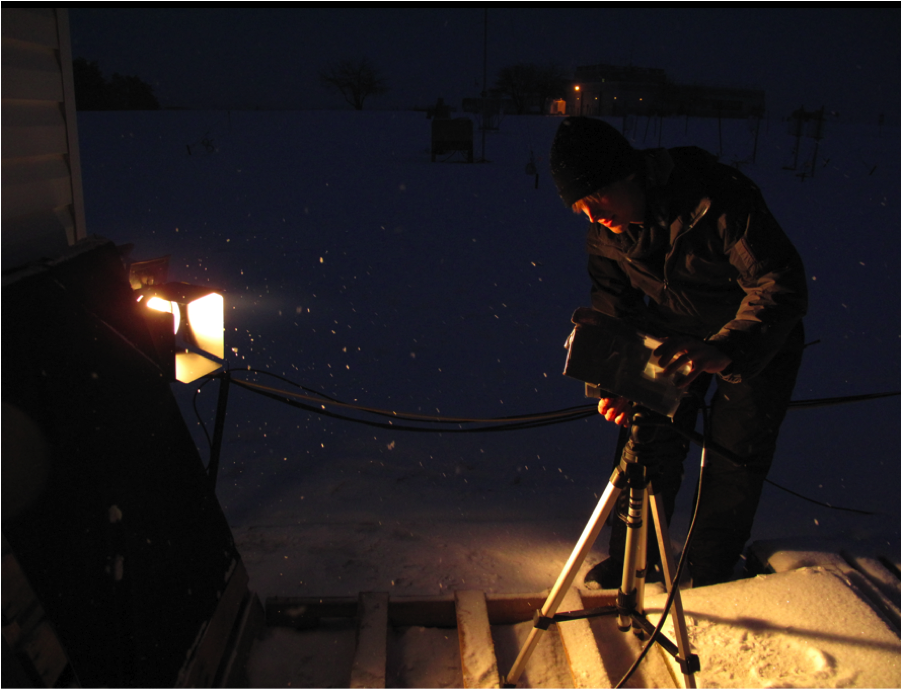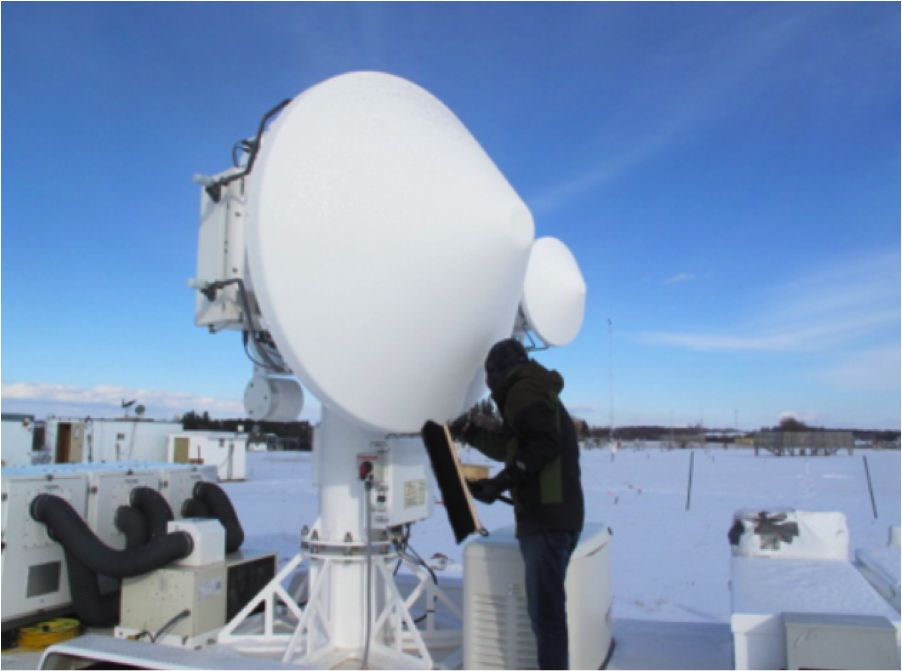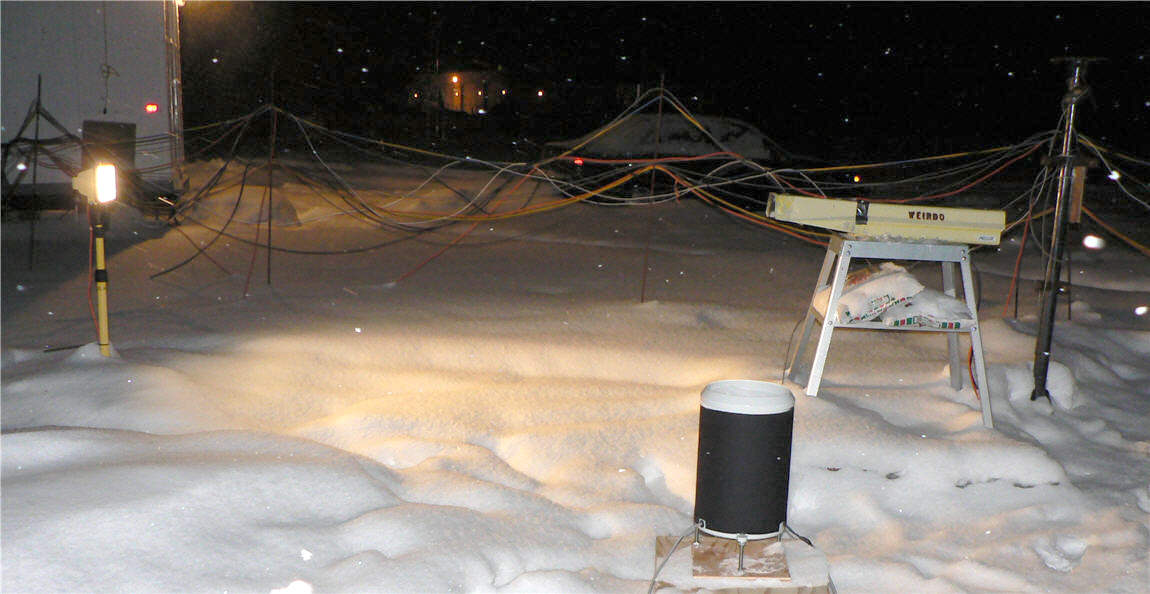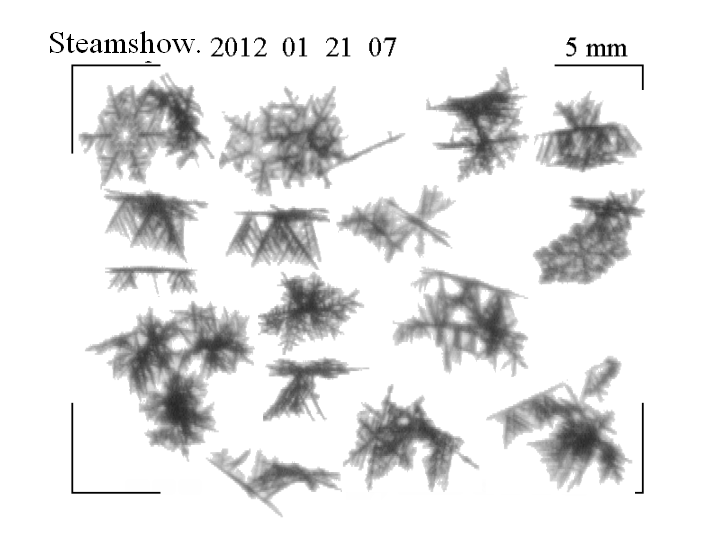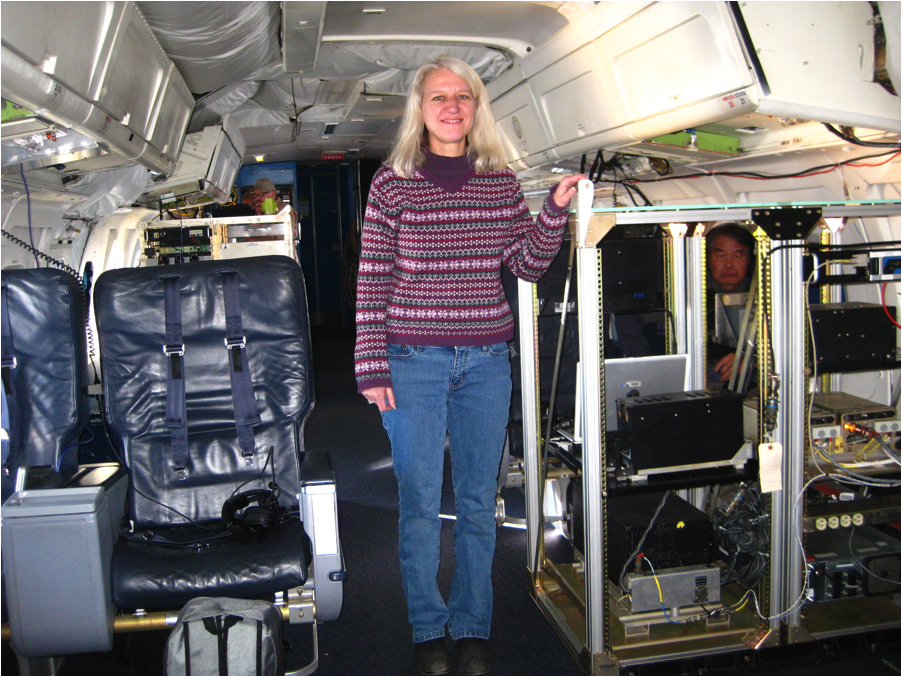Hot Plate Sensor at GCPEx

The sensor reacts by applying voltage to maintain the equal temperatures. The voltage is then converted to Watts (a measure of the power taken to evaporate the precipitation). This power is divided by the heat needed to evaporate one gram of water, thus providing the total grams of water falling on the hot plate. Photo taken 7 February 2012.



